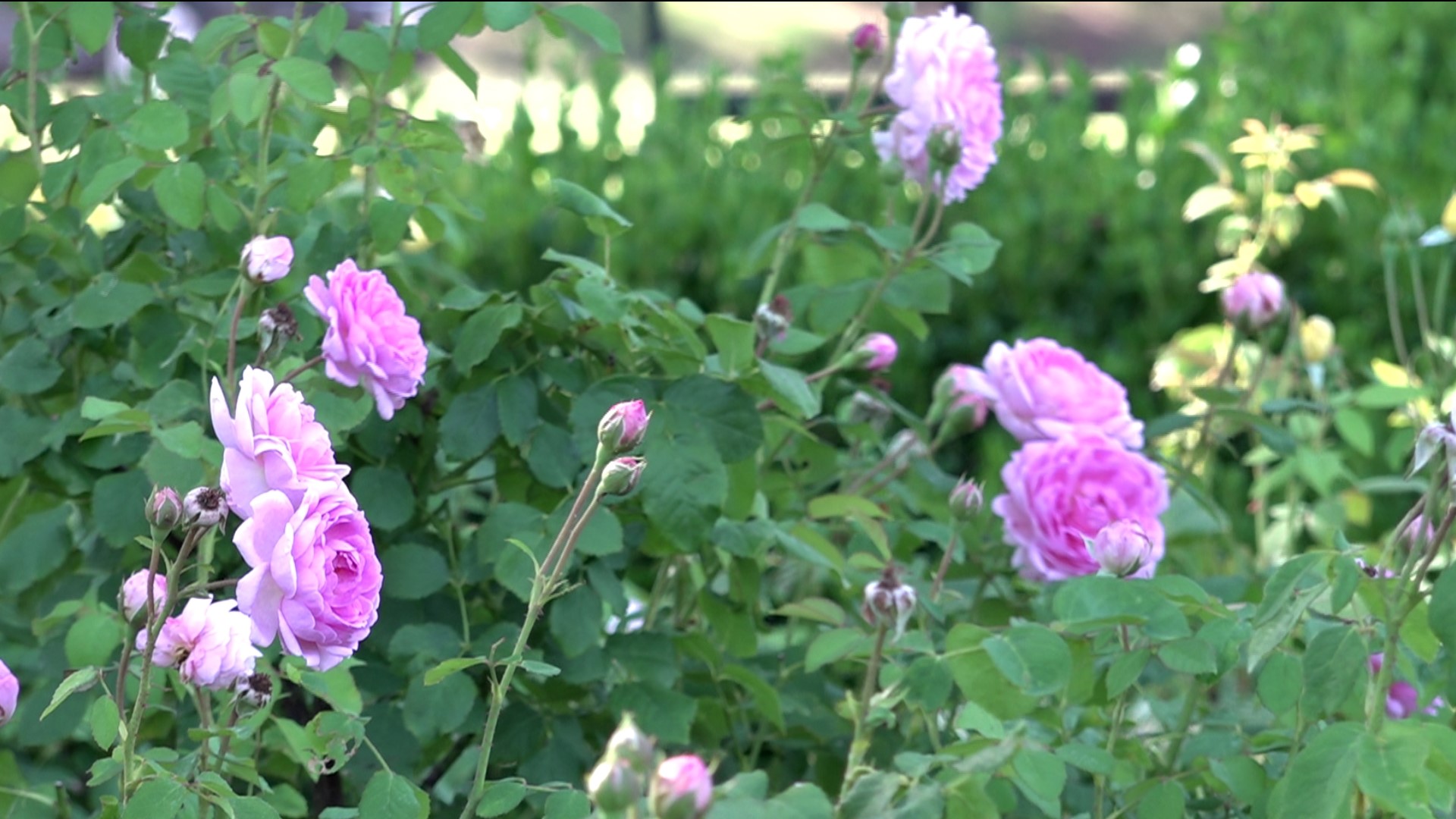NORFOLK, Va. — There's a reason why today, when people think of gardening, roses are the first flowers to come to mind.
They've got wide, bright flowers that come in all sorts of colors, they have a long bloom season, they're somewhat drought-tolerant, and they have that characteristic, perfumey smell.
Andrew Earehart, a rosarian at the Norfolk Botanical Garden, is an expert on taking care of them.
While they're a favorite today, he said that's (historically speaking) a recent trend.
"Roses actually don't go back quite as far as people think, as far as us breeding them to have in our gardens. They've always been here, but not the varieties we see today," he explained. "The 1800s is when people really started to take them out of the wild, and see that they had a place in the garden."
The Margaret Moore Hall Rose Garden, or the bicentennial garden, takes up about three acres of the Norfolk Botanical Garden.
That's where Earehart, other horticulturalists and a team of volunteers maintain 300 varieties of rose plants, with about 3,000 individual roses.
"Some are different types. Some are like shrub roses, some are like the hybrid teas that are known for more like cut flowers, that sort of thing. So they all have their place," he said.
He's often asked which roses smell the best. For that, he points people to the antique roses, which are varieties that go back a couple hundred years, to the early stages of rose cultivation.
"As we bred more and more in the past century, we have started to focus more on disease resistance, but it's all about trade-offs," he said. "So to get some of that disease resistance, we had to lose some of the scent or some other things."
Another thing people have crossbred roses for is "repeat bloom" capacity. That means — from May through September — once a flush of flowers withers, the plant is able to turn around and make more.
"A lot of that depends on how much we stay on top of deadheading and pruning because the more we do that, the more it's going to repeat bloom. And then there's generally a second not quite as large flush, in the fall... late summer, early fall."
Here's a video where he explains why, when, and where to deadhead your roses:
If you're thinking of getting into rose gardening yourself, Earehart recommends the Knock Out® series.
"They are known as self-deadheading, to an extent, so even if you don't get around to pruning them, they can actually shed those spent blooms themselves, and they're just very dependable bloomers," he said. "They are relatively disease-free, at least compared to other varieties of roses. Just a very solid all-around rose."
Most roses like full sun, but they can tolerate a short period of shade per day. Make sure you have nutrient-rich, composted soil for them. And while established rose plants are drought-tolerant, the first season you plant a rose, you need to give it plenty of water.
Earehart said watering them at the base of the plant, instead of from above, will help fight off diseases and pathogens that target roses. The fewer leaves you get wet, the better.
The only task you need to keep in mind for winter is the pre-growth prune. For Hampton Roads, this comes around February or March, right before the weather starts turning. Cut back your rose bushes to about knee height, leaving between five and nine main canes, to encourage new growth.
Most importantly: take some time to sit back and smell the roses.
"They're gratifying to work with," said Earehart.

